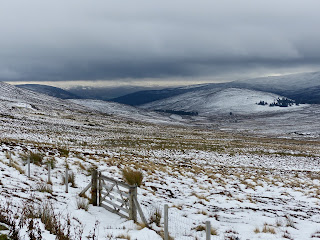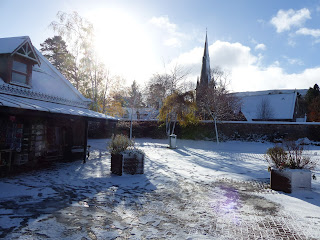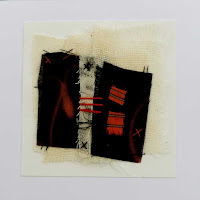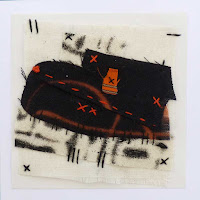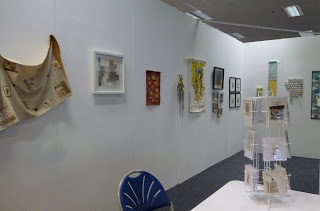Recently, I met a friend in London for a visit Tate Britain to see their current
Aftermath exhibition. This traced the developments in art in the wake of World War 1 and evoked powerfully the horrors of life in the trenches and the lasting effects of the conflict after it had ceased. It was a most challenging and thought-provoking day. There were so many heartrending images of suffering to view and many will stick long in the memory.
Unfortunately, however, my choice of images has been limited as photographs were not permitted. I've relied therefore on those shown
here on the Tate Britain website.
The first painting below was by French artist Paul Jouve and was to be seen towards the start of the exhibition. An abandoned helmet became a poignant symbol of suffering and destruction for many artists caught up in the conflict. Here the sense of pointlessness is highlighted by the cherry blossom on the tree in the background - a poignant link to the normality of the past. In a similar vein was a painting by Sir William Orpen. Standing in front of both these paintings, the desolation and sense of loss were palpable. In both, the heartless destruction of everything was highlighted by the apparently sunny colour palette. They each evoked strongly the silence and absence of all life once the fighting stopped.
Paul Jouve - Tombe d'un soldat serbe a Kenali 1917 (Grave of a Serbian soldier at Kenali 1917)
Sir William Orpen - A grave in a Trench 1917
I found another by Sir William Orpen in my searches after I returned home. It seemed to evoke especially strongly the utter devastation and futility and the undervaluing of life in the wake of the battles.
Sir William Orpen - Destruction: part of Zonnebeke 1918
There followed powerful evocations of both the terrible wounds incurred by many survivors of the trenches and the effects of the conflict on the women and children left at home where homes and lives were destroyed.
Otto Dix - Prostitute and Disabled War Veteran. Two Victims of Capitalism 1923
Christopher Richard Wynne Nevison - Ypres After the First Bombardment 1916
After the war, many artists returned to prewar classicism (among them surprisingly to me was Picasso), seeking the comfort of the known. Yet others reflected on the utter pointlessness of the conquest. They called into question every aspect of society, seeking to destabilise conventional gender roles and social order. Out of this questioning arose Dadaism and Surrealism, represented in the exhibition by the work of
Hannah Hoch and
Max Ernst among others.
Hannah Hoch - Cut with the Kitchen Knife Through the Last Weimar Beer-Belly Cultural Epoch in Germany (1919 - 20)
Max Ernst -Celebs 1921
A simple piece of sculpture by Wilhelm Lehmbruck made a particular impression on me.
Wilhelm Lehmbruck - The Fallen man 1915 -16
Lehmbruck was a German sculptor. This displayed so graphically that the horror and sense of pointlessness were felt equally keenly on both sides of the conflict.
The exhibition is on until 24 september. I highly recommend it, though it was a gruelling ride. We had booked our visit as part of a package which included lunch in the Rex Whistler restaurant. This provided an excellent meal and some much-needed light relief to the challenges of the exhibition.
I suspect that this is a formula we will repeat, though perhaps next time we will find more cheerful subject matter.









